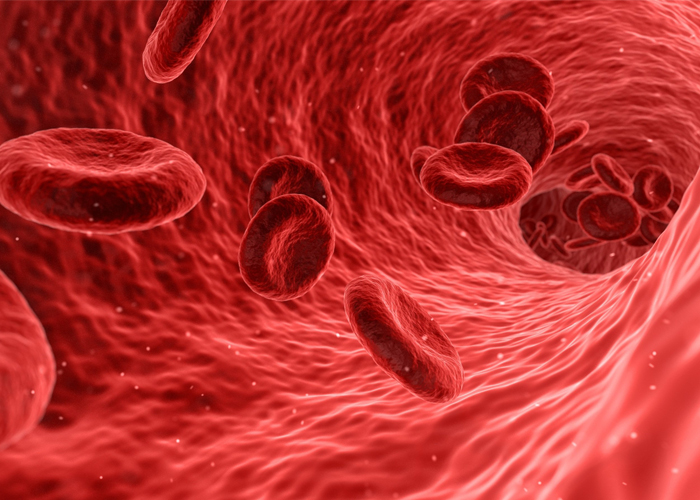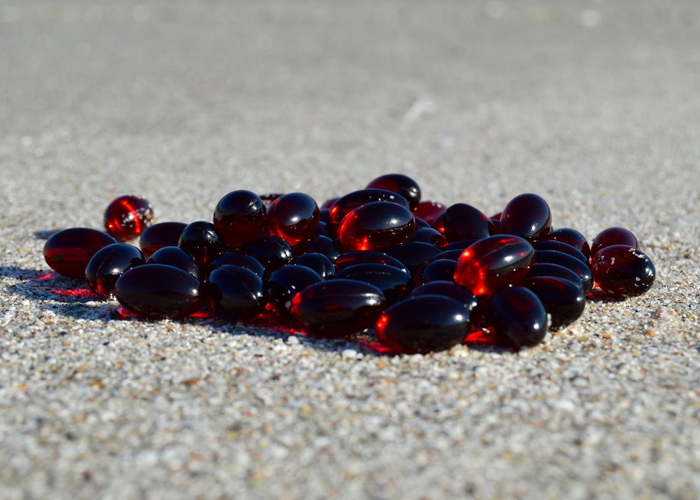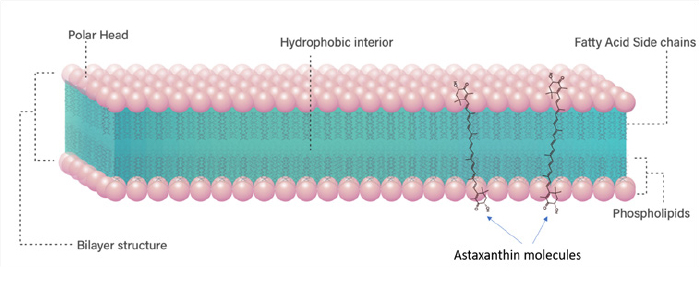ASTAXANTHIN AND THE IMMUNE SYSTEM
The immune system
The immune system, as the name implies, is not a single organ such as the heart or the liver. Instead, it is a marvelous, intricate cooperation between barriers, cells, and biomolecules that communicate with each other in extraordinary complex ways (Abbas et al., 2017).
This system is always active, carrying out surveillance throughout the body to provide rapid response to infection.
Its activity is enhanced if an individual becomes infected. This heightened activity is accompanied by an increased rate of metabolism, requiring energy sources, substrates for biosynthesis and regulatory molecules, which are all ultimately derived from the diet. It is well established that nutrition plays a significant role in immune function.
Activation of the immune response induces the production of lipid-derived mediators such as prostaglandins and leukotrienes and of many different types of protein including immunoglobulins, chemokines, cytokines, cytokine receptors, adhesion molecules and acute-phase proteins. This requires availability of specific fatty acids and amino acids (Calder et al., 2020).
Fatty acids have numerous possibilities to modulate
immune functions of the cell by influencing
its structure, metabolism, and function
The best way to strengthen your immune system is following the general health guidelines. Taking care of your body is the best preventive measure, giving your immune system the advantage. As many of the immune cells are in place even before infection, providing the cells with the optimal nutrition is a good way to start.
Fatty acids have numerous possibilities to modulate immune functions of the cell by influencing its structure, metabolism, and function, acting through surface proteins, intranuclear receptors or membrane transporters (Radzikowska et al., 2019). Omega-3 fatty acids are known to possess important immune-regulatory functions and should be incorporated in advance into the immune cell membranes to provide the appropriate balance of immune responses necessary the body to help defend against and resolve infections that arise (Gutiérrez et al., 2019).
Your first line of defense is to choose a healthy lifestyle.
Astaxanthin, a potent immunomodulator
The cells of the immune system are very active units and, therefore generate reactive oxygen species (ROS) and free radicals during normal cellular activity. Oxidative stress on the membrane of normal healthy cells can also be caused by oxidizing pollutants and many viruses, factors that are capable of inducing excessive production of ROS (Chew & Park, 2009).
In addition, immune cells are particularly sensitive to oxidative stress because their plasma membranes contain a high percentage of polyunsaturated lipids which are easily vulnerable to oxidation . As these cells are particularly exposed, they would benefit from the presence of molecules that could counteract oxidation.
Astaxanthin has 10 times more
antioxidant activity than other carotenoids
Astaxanthin is a red-orange lipid soluble pigment belonging to the family of carotenoids. It is primarily found in the marine environment and is responsible for the red colours of salmonids and crustaceans.
Natural astaxanthin has a clinically proven safety profile and has antioxidant, anti-inflammatory, and immunomodulatory properties. It has been reported that astaxanthin has a high antioxidant activity: 10 times higher than other carotenoids such as lutein, canthaxanthin, and β-carotene and 100 times higher than α-tocopherol (Miki, 1991).
Astaxanthin has a polar–nonpolar– polar structure that could easily pass through and fix into the double layers of cell membranes (figure 1 and 2). Unlike most antioxidants, which works either in the inner side of the membrane (e.g., vitamin E and β-carotene) or on the outer side (e.g., vitamin C), astaxanthin can scavenge and quench reactive oxygen species (ROS) and free radicals (superoxide anion, hydrogen peroxide, singlet oxygen, etc.) in both the inner and outer layers of the cell membrane (Hussein et al., 2006).
The ROS scavenging effect of astaxanthin is approximately 6000 times higher than that of vitamin C, 800 times than that of coenzyme Q10 and 550 times than that of vitamin E (Zhang et al., 2016).
Calanus Oil is unparalleled when it comes
to astaxanthin content in a marine oil
Astaxanthin may play a vital role in regulation of the oxidative stress induced by ROS at the early stage of an infection, and regulation of the immune responses and downregulation of pro-inflammatory components (comprehensive review by Talukdar et al., 2020). The immunomodulatory, anti-inflammatory and antioxidant actions of astaxanthin have been demonstrated in human studies in doses between 2 – 40 mg/day. Multiple studies have shown astaxanthin to be safe for human consumption and the bioavailability is higher in the form of astaxanthin esters (Yuan et al., 2011). In addition, as astaxanthin is a lipid soluble compound, the absorption is increased when consumed with dietary oils.
Calanus Oil is unparalleled when it comes to astaxanthin content in a marine oil, with an average content of 1800 ppm. A daily dosage provides up to 4 mg astaxanthin esters in addition to the important omega-3 fatty acids, which are necessary for optimal nutrition.
Crosswise orientation of astaxanthin in the cell membrane. The polar end groups overlap the polar boundary zones of the membrane, while the nonpolar middle fits the nonpolar interior (modified from Pashkow et al., 2008).
Sources
Abbas, K. A., Lichtman, A. H., & Pillai, S. (2017). Cellular and Molecular Immunology (9th ed.). Philadelphia: SaundersElsevier.
Calder, P. C., Carr, A. C., Gombart, A. F., & Eggersdorfer, M. (2020). Optimal Nutritional Status for a Well-Functioning Immune System Is an Important Factor to Protect against Viral Infections. Nutrients, 12(4), 1181. Retrieved from https://www.mdpi.com/2072-6643/12/4/1181
Chew, B. P., & Park, J. S. (2009). The Immune System. In G. Britton, H. Pfander, & S. Liaaen-Jensen (Eds.), Carotenoids: Volume 5: Nutrition and Health (pp. 363-382). Basel: Birkhäuser Basel.
Gutiérrez, S., Svahn, S. L., & Johansson, M. E. (2019). Effects of Omega-3 Fatty Acids on Immune Cells. International journal of molecular sciences, 20(20), 5028. doi:10.3390/ijms20205028
Hussein, G., Sankawa, U., Goto, H., Matsumoto, K., & Watanabe, H. (2006). Astaxanthin, a Carotenoid with Potential in Human Health and Nutrition. Journal of Natural Products, 69(3), 443-449. doi:10.1021/np050354+
Miki, W. (1991). Biological functions and activities of animal carotenoids. Pure and Applied Chemistry, 63(1), 141-146. doi:https://doi.org/10.1351/pac199163010141
Pashkow, F. J., Watumull, D. G., & Campbell, C. L. (2008). Astaxanthin: a novel potential treatment for oxidative stress and inflammation in cardiovascular disease. Am J Cardiol, 101(10a), 58d-68d. doi:10.1016/j.amjcard.2008.02.010
Radzikowska, U., Rinaldi, A. O., Çelebi Sözener, Z., Karaguzel, D., Wojcik, M., Cypryk, K., . . . Sokolowska, M. (2019). The Influence of Dietary Fatty Acids on Immune Responses. Nutrients, 11(12), 2990. doi:10.3390/nu11122990
Talukdar, J., Bhadra, B., Dattaroy, T., Nagle, V., & Dasgupta, S. (2020). Potential of natural astaxanthin in alleviating the risk of cytokine storm in COVID-19. Biomed Pharmacother, 132, 110886. doi:10.1016/j.biopha.2020.110886
Yuan, J.-P., Peng, J., Yin, K., & Wang, J.-H. (2011). Potential health-promoting effects of astaxanthin: A high-value carotenoid mostly from microalgae. Molecular Nutrition & Food Research, 55(1), 150-165. doi:https://doi.org/10.1002/mnfr.201000414
Zhang, Z.-W., Xu, X.-C., Liu, T., & Yuan, S. (2016). Mitochondrion-Permeable Antioxidants to Treat ROS-Burst-Mediated Acute Diseases. Oxidative medicine and cellular longevity, 2016, 6859523-6859523. doi:10.1155/2016/6859523
This post is also available in: French





